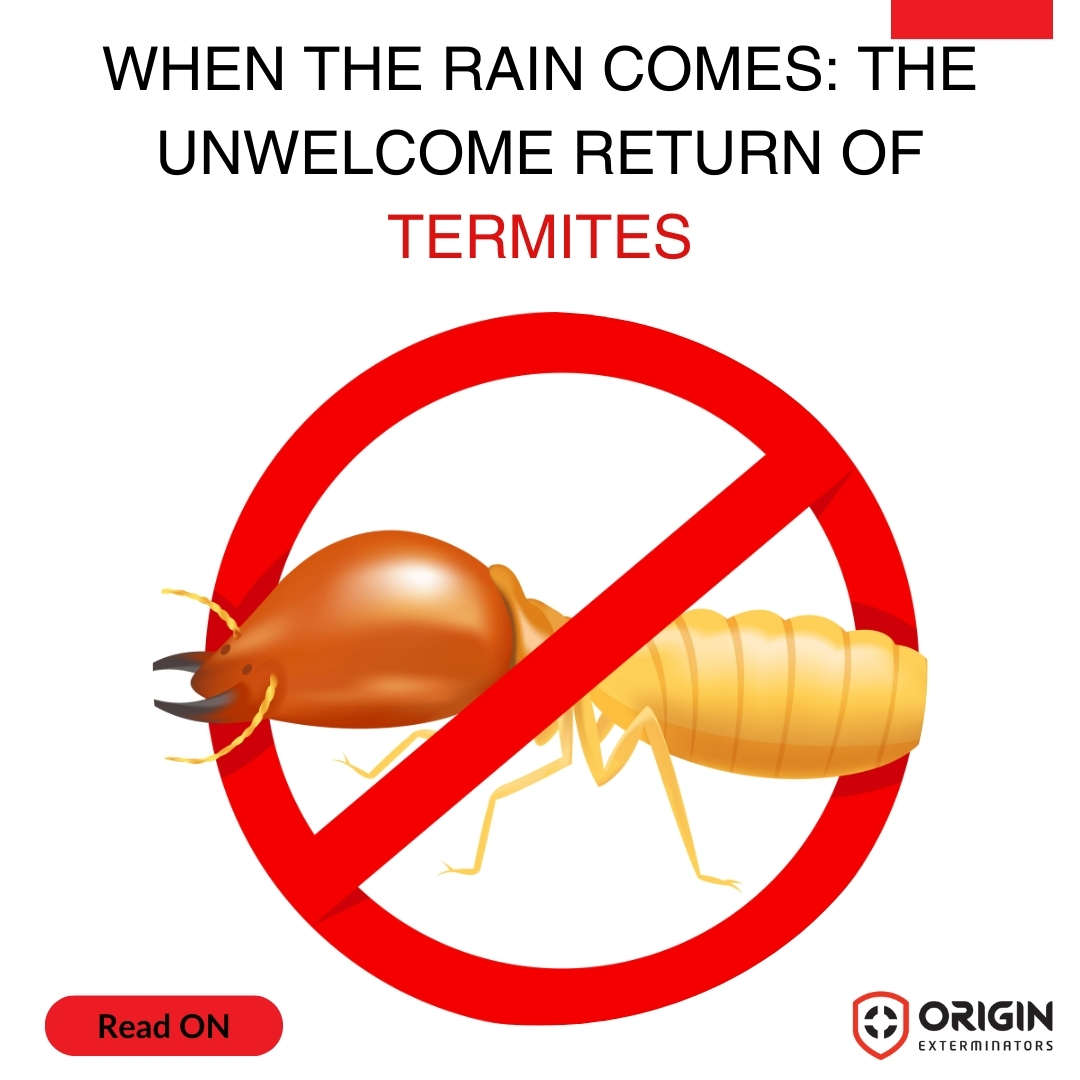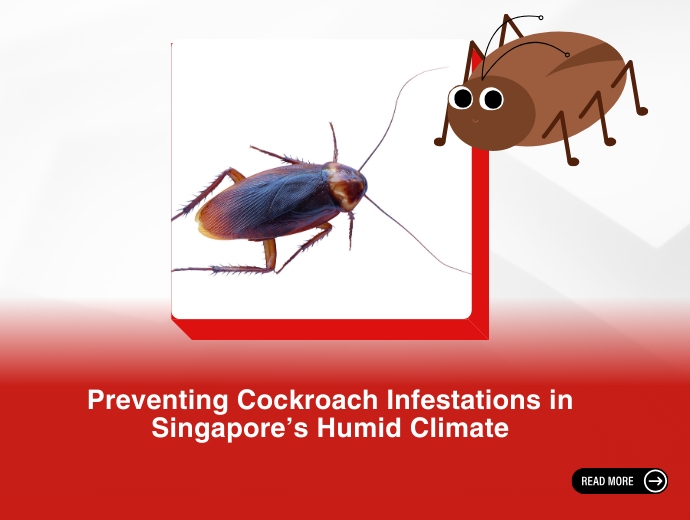The Return Of Alates: Dealing With Flying Termites And Ants In The Rainy Season
Ah - the rains are back! The skies look bluer, the grasslands look greener and the oceans look fuller. Indeed, a sight to adore. Think of a fine rainy evening, when you’re sipping hot coffee on the porch, relishing the view - only to be disturbed by an annoying buzz right next to your ear. Here they come - the alates.
Your less-welcomed guests: alates, or flying termites and ants are winged insects that emerge in large numbers during the rainy season, causing havoc in homes and gardens, especially when they swarm in large numbers (which happens quite often!).
They may cause damage to wooden structures and furniture by burrowing into them to establish new colonies. This can weaken the integrity of buildings and lead to costly repairs. They can be also a nuisance to homeowners when they invade indoor spaces in search of shelter or food. Not to mention, the allergic reactions that they trigger. On a larger scale, they’re also notorious for feeding on agricultural crops, posing a threat to food security and livelihoods.
Don’t fret, they’re not as scary as you may think and can be dealt with easily - through the right preventative as well as curative tactics. Before we dive into what these tacts are - let’s first understand a bit about the alates.
Meet The Alates - Flying Termites and Ants
To understand who the alates are you must first know about the caste system in termite and ant colonies. You heard it right - within these colonies, there exists a structured caste system with each member playing a crucial role in the colony's survival and propagation.
At the forefront of defence are the soldiers, distinguished by their larger heads and powerful mandibles or chemical defences. These brave individuals stand as the vanguard, ready to fend off any threat to the colony's safety. Following closely behind are the tireless workers, the backbone of the colony. Without wings but equipped with specialized structures for various tasks, they diligently forage for food, tend to the young, and maintain the nest's infrastructure.
Lastly, we have the alates - the ones we find buzzing around. These are the winged reproductives whose emergence marks a pivotal moment in the colony's lifecycle. They are the ones that fly out of their colonies (known as the nuptial flight!) and find a mate. Later, they become the kings and queens of their own nascent colonies.
|
Know Your Bug:
While both, flying termites and ants are alates and may look similar, there are key differences between the two. Both insects have wings and are capable of flight, but the way they reproduce and their behaviours differ significantly. Additionally, while both have wings, termite wings are longer and more uniform in size, whereas flying ants have wings of varying lengths.
|
Time to address the elephant in the room - why do you find more of these alates in the rainy season?
Why Do They Return With The Rain?
The rainy season is the perfect time for the “nuptial flight” of alates. It is only after the first heavy rains of the rainy season that they leave their original colony in swarms to mate and establish new colonies. After all, they are the winged royalty of their colonies and the future kings and queens of their worlds!
The increased moisture in the air during the rainy season softens the ground, making it easier for alates to dig tunnels and establish their nests. Additionally, the rain provides a plentiful supply of food for the newly established colonies.
So, when the rains arrive, the alates take flight, seeking mates and new territories. This synchronized emergence ensures that they have the best chance of survival and propagation.
What Does An Alate Infestation Look Like?
Identifying an alate infestation early is crucial for effective pest control. There are several signs to look out for that indicate the presence of flying termites or ants:
- Swarms of winged insects: If you notice a swarm of winged insects around your property, especially near light sources, there is a high chance that they are alates.
- Discarded wings: After mating, alates shed their wings, leaving behind piles of discarded wings near light sources or windowsills.
- Mud tubes: Termites build mud tubes to protect themselves as they move from the ground to the wooden structures in your home. These tubes are a clear indication of a termite infestation.
- Wood damage: Termites feed on wood, causing structural damage over time. Look for hollowed or crumbling wood, as well as mud-like trails on wooden surfaces.
How To Prevent Alates Infestation
Prevention is always better than cure when it comes to dealing with alates. Here are some measures you can take to prevent an infestation:
- Remove sources of moisture: Alates thrive in damp environments. Fix leaky pipes, ensure proper drainage, and eliminate any standing water around your property.
- Keep your property clean: Regularly clean your home and garden, removing any debris or decaying wood that may attract alates.
- Seal entry points: Inspect your home for any cracks or gaps in the foundation, walls, or windows. Seal these entry points to prevent alates from entering.
- Store firewood away from your home: Alates are attracted to firewood, so keep it at a safe distance from your house to avoid inviting them into your living space.
DIY Hacks To Keep Alates At Bay
If you have noticed alates around your property but the infestation is still manageable, you can try some do-it-yourself hacks to tackle them:
- Boric acid: Create a mixture of boric acid and sugar, and place it near areas where you have seen alates. The sugar attracts them, while the boric acid acts as a toxic bait.
- Orange oil: Mix orange oil with water and spray it in areas where you suspect alates are present. The scent of orange oil repels them.
- Diatomaceous earth: Sprinkle diatomaceous earth in areas prone to alate activity. This natural substance damages the exoskeleton of alates and causes dehydration, ultimately killing them.
When To Go For Professional Termite and Ant Control Services
While DIY hacks can be effective in controlling small alate infestations, severe infestations require the expertise of professional termite and ant control services. Here are some signs that indicate it's time to call in the professionals:
- Widespread infestation: If you notice alates in multiple areas of your home or garden, it is likely that the infestation is widespread and requires professional intervention.
- Structural damage: If you find significant structural damage caused by termites, it is important to have a professional assess the extent of the damage and provide appropriate treatment.
- Repeated infestations: If you have experienced alate infestations in the past and they keep recurring despite your DIY efforts, it may be time to consult a professional for long-term solutions.
The Final Word: Dealing With Unwelcome Guests
In conclusion, alates, or flying termites and ants, are a common sight during the rainy season. Understanding their behaviour, signs of infestation, and prevention methods can help you deal with them effectively. While DIY hacks can be useful for small infestations, severe infestations require the expertise of professional termite and ant control services. In case you’re looking for professional assistance, get in touch with ORIGIN to know how we can help you fight these alates proactively!




.png)
